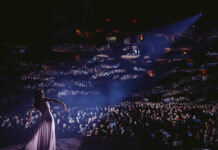- Learn the basics
The music alphabet has a set of 7 repeating notes; A, B, C, D, E, F and G. These notes are displayed on a number of horizontal lines, referred to as the staff. The staff contains five parallel lines, with spaces in between them. The lines and spaces are numbered in order to help with referencing, and they are counted from the lowest to the highest. Different instruments have their notes arranged on the staff, on the treble clef for higher notes, bass clef for lower notes and grand staff for both lower and higher notes. Additionally, music is written in sections, which are shown by the use of barlines. These sections break music into individual measures.
- Count when you read
When learning to read music, you may be will be required to count the beat silently as you read through the sheet. Most music for learners is 4/4 time, meaning that you count four times for a high note and four for a low note. That is, when you are reading, do it as; one-and-two-and-three-and-four, giving the learner a beat to play eighth notes as well. Using this method, the main beat will be when the foot taps the floor, while the and will represent when the foot is raised.
- Practice without an instrument
It is possible to read music without having to play it. You can do this by singing the notes in your head or aloud while following the notes along as you point at them where they are written. By getting familiar with the timings and the progression of the notes, the learner can get an idea how the song is supposed to sound like even before they play it.
- Take time
Just like learning to play an instrument takes a long time to perfect, do not expect to learn how to read music overnight. It may not take the same amount of time, but nonetheless, it takes up a while. To make things easier, learn the basics of music which will help you understand what is written down. To accelerate your progress, you can visit a number of online websites, like https://soundchime.com, where you can get more assistance with written music.
- Memorize key signatures
A key signature is a group of signatures that instructs the musician which notes to play high or lower than normal. The key signature basically shows how many flats or sharps are present in a piece, which in turn identifies which key the piece is in. The key signature is found next to the staff, at the beginning of a line of music notation, and is a very crucial component of music reading. Major key signatures, sharp, can be read from a half step above the last sharp on the key signature. A minor key, flat, can be found at the second to last flat. The only exception to this is the F major/D major, whose key signature only has one flat, B-flat.







